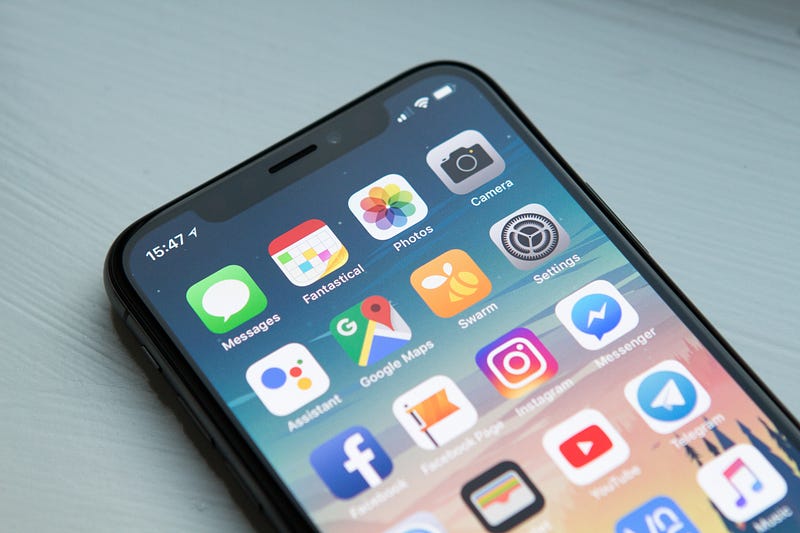The Economics of Mobile App Development: A Comprehensive Guide
Written on
Chapter 1: Understanding Mobile App Development Economics
In today’s digital landscape, mobile applications have become a crucial element in our everyday lives. Spanning communication, entertainment, finance, and productivity, there’s virtually an app for every need. As the appetite for mobile apps grows, businesses and entrepreneurs are increasingly attracted to the lucrative economic prospects of creating a successful app. Nevertheless, the economics behind mobile app development is complex, necessitating careful evaluation of multiple factors. This article will explore the essential economic considerations of mobile app development.

Section 1.1: Development Costs
The primary and most significant factor in app development economics is the associated costs. These expenses can fluctuate greatly based on the app's intricacy, the chosen platform (iOS, Android, or both), and the expertise and location of the development team. Major cost elements include:
- App Design: This phase involves crafting user interfaces, wireframes, and graphical assets. Investing in an intuitive and aesthetically pleasing design is vital for enhancing the app's success potential.
- Development: The coding and programming involved in creating the app constitute a major portion of the total expense. This includes both front-end and back-end development, alongside database integration.
- Testing: Thorough testing is crucial to ensure the app operates effectively on various devices and under different scenarios. This process helps to identify and rectify bugs, which can be both time-intensive and costly.
- Marketing and Promotion: Simply developing an app is insufficient; it also necessitates marketing efforts to connect with the intended audience. Allocating resources for marketing, including app store optimization and advertising, is essential for user attraction.
Section 1.2: Revenue Generation Strategies
Prior to initiating app development, it is vital to grasp the potential revenue models available. Different apps can adopt various monetization strategies, including:
- Paid Apps: Users pay a one-time fee to download and use the app. While this might result in fewer initial downloads compared to free alternatives, it can yield immediate revenue.
- In-App Purchases (IAP): This model offers users the chance to buy additional features, virtual goods, or premium content within the app. IAPs can create a consistent income stream from engaged users.
- Subscription Model: Users pay a recurring fee to access the app's content or services. This model can generate a reliable revenue flow but requires ongoing value delivery to maintain subscriber interest.
- Advertisements: A free app can display advertisements to generate income. The effectiveness of this model hinges on having a substantial user base and high engagement levels.
- Freemium Model: This approach offers a basic version of the app for free while providing advanced features through IAPs or subscriptions.
Section 1.3: Market Evaluation and Competition
Conducting a detailed market evaluation is essential for assessing potential demand and analyzing competition. Identifying a unique selling proposition (USP) can help set the app apart from competitors and attract the desired audience. Scrutinizing market trends, target demographics, and user preferences is crucial for making informed development decisions.
Section 1.4: Return on Investment (ROI) and Break-Even Analysis
Estimating potential ROI and determining the break-even point is key for app developers and businesses. Understanding when the app will start producing profits is vital for financial planning and risk assessment. Elements such as development costs, revenue models, and user acquisition rates will affect the ROI and break-even timeline.
Section 1.5: Ongoing Maintenance and Updates
Economic considerations extend beyond the app’s launch. Regular maintenance and updates are necessary to ensure smooth operation, resolve bugs, and introduce new features. Budgeting for continual maintenance is essential for the app's longevity and user satisfaction.
Chapter 2: Key Video Insights on App Development
The first video, "Building the Apps Economy," delves into the financial landscape of mobile app development, highlighting opportunities and challenges that entrepreneurs face in this booming market.
The second video, "Mobile App Development with Drupal: Broadening the Mobile Experience," discusses how Drupal can enhance the mobile app development process, providing insights into leveraging this platform for greater user engagement.
In conclusion, developing a mobile application is not merely a technical task but also a substantial economic decision. A thorough understanding of costs, potential revenue streams, and market dynamics is critical for making informed choices. Furthermore, effective marketing and ongoing updates are vital to maintain competitiveness in a rapidly changing landscape. By thoroughly analyzing the economics surrounding mobile app development, businesses and developers can significantly enhance their chances of creating a valuable and sustainable digital product.